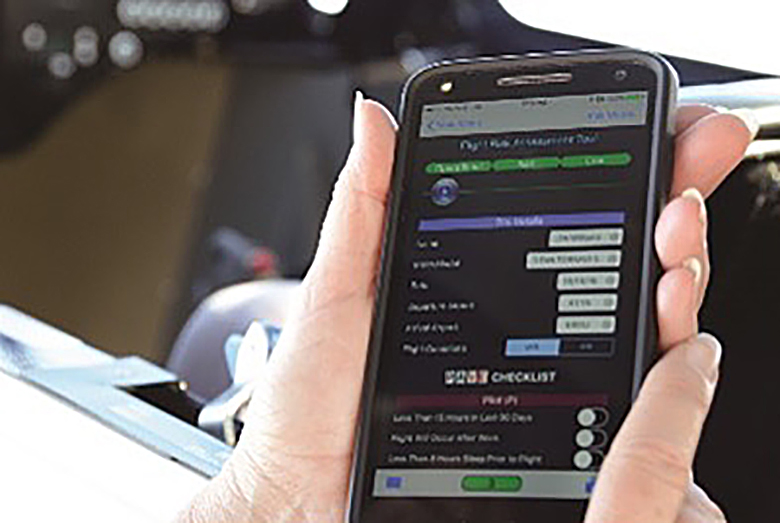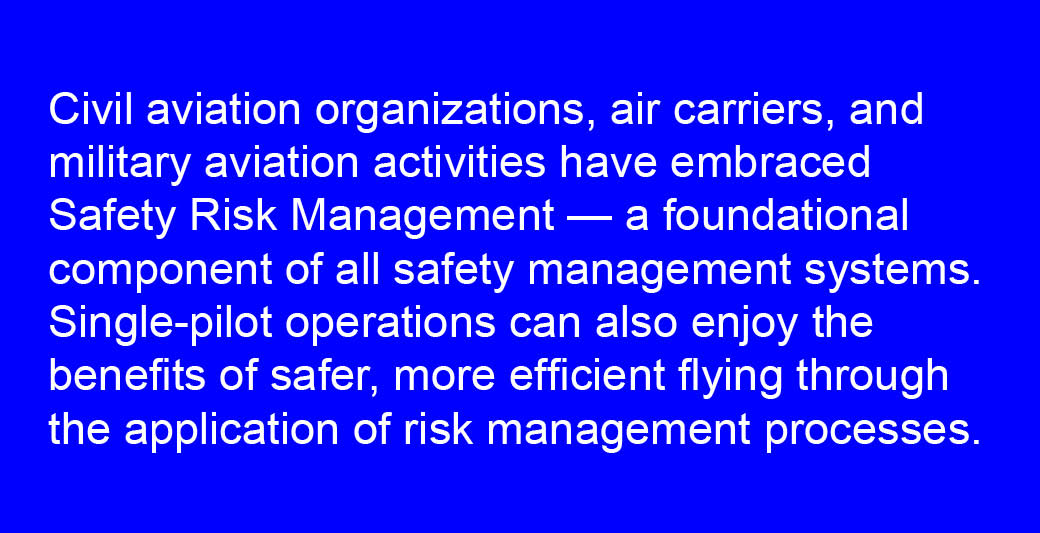Introduction to Safety Risk Management
Risk management is a formalized way of dealing with hazards. It is a logical process of evaluation where you weigh the potential costs of a risk against the potential benefits you might receive, if you allowed that risk to stand uncontrolled. In order to better understand risk management, the terms “hazard” and “risk” need to be understood. A hazard is a present condition, event, object, or circumstance that could lead to or contribute to an unplanned or undesired event such as an accident. It is a source of danger. Examples of common aviation hazards include a nick in the propeller blade, improper refueling of an aircraft, pilot fatigue, and the use of unapproved hardware on the aircraft. If pilots do not recognize a hazard and choose to continue, the involved risk is not managed. Risk management is a three-step process that people use to:
- Identify hazards
- Express how likely those hazards are to negatively impact their operations
- Reduce the chances that those hazards will cause an accident.
Step 1: Hazard Identification
What conditions or circumstances could negatively affect your flight?
Step 2: Risk Assessment
How likely are the identified hazards to cause a problem and how severe will the consequences be if they do?
Step 3: Risk Mitigation
What can you do to reduce the risks to acceptable levels?
We need to constantly monitor the hazards and risks associated with our flight to make sure that the identified risks remain at an acceptable level.
Flight Risk Assessment Tools (FRAT)
Because every flight has some level of risk, it is critical that pilots are able to differentiate, in advance, between a low-risk flight and a high-risk flight, and then establish a review process and develop risk mitigation strategies. A FRAT enables proactive hazard identification, it is easy to use, and can visually depict risk. It is an invaluable tool in helping pilots make better go/no-go decisions and should be a part of every flight.
Although designs can vary, FRATs generally ask a series of questions that help identify and quantify risk for a flight. The FAA Safety Team (FAASTeam) currently offers a FRAT tool that follows the PAVE checklist, covering questions on the Pilot, Aircraft, enViroment, and External Pressures.
For example, you may be asked how much rest you’ve had, how much time you’ve had in the aircraft, and what the weather conditions are for your destination. Based on the answers you supply, a total risk score is calculated.
No FRAT can anticipate all the hazards that may impact a particular flight, but there are some common hazards that GA pilots encounter regularly.
The FAASTeam’s easy-to-use and GA-focused FRAT can get you started in effective safety risk management. The FRAT tool is currently available as an automated spreadsheet available at https://go.usa.gov/xkhJK or via an iOS app available on the App Store at http://bit.ly/FAAST-FRAT.
Resources
¨ Risk Management Safety Minute Video https://youtu.be/fSJnS9ShMng
¨ Risk Management Training Video https://youtu.be/luiIOUZeCW0
¨ FAA Risk Management Handbook http://bit.ly/rm-handbook
¨ Flight Risk Assessment Tools (FRAT) Fact Sheet http://bit.ly/2hk3omM
¨ “Risky Business: The What, How, and Why of Risk Management” https://adobe.ly/2iBEi3h
¨ “Say Ahh … A Pilot’s Guide to Self-Assessing Risk” https://adobe.ly/2ibKIH0
¨ “Is My Aircraft Right for Flight? The Importance of Preflight Prep” https://adobe.ly/2iePJ4p
¨ “The Wild (Not So Blue) Yonder: Mitigating Risk in the Flight Operating Environment” https://adobe.ly/2hus9AX
¨ “Are We There Yet? How External Pressures Can Affect Your Flight” https://adobe.ly/2ioBgQs
Reprinted with permission from FAA Safety Briefing. Visit the Flight Safety Briefing website: https://www.faa.gov/news/safety_briefing/.





